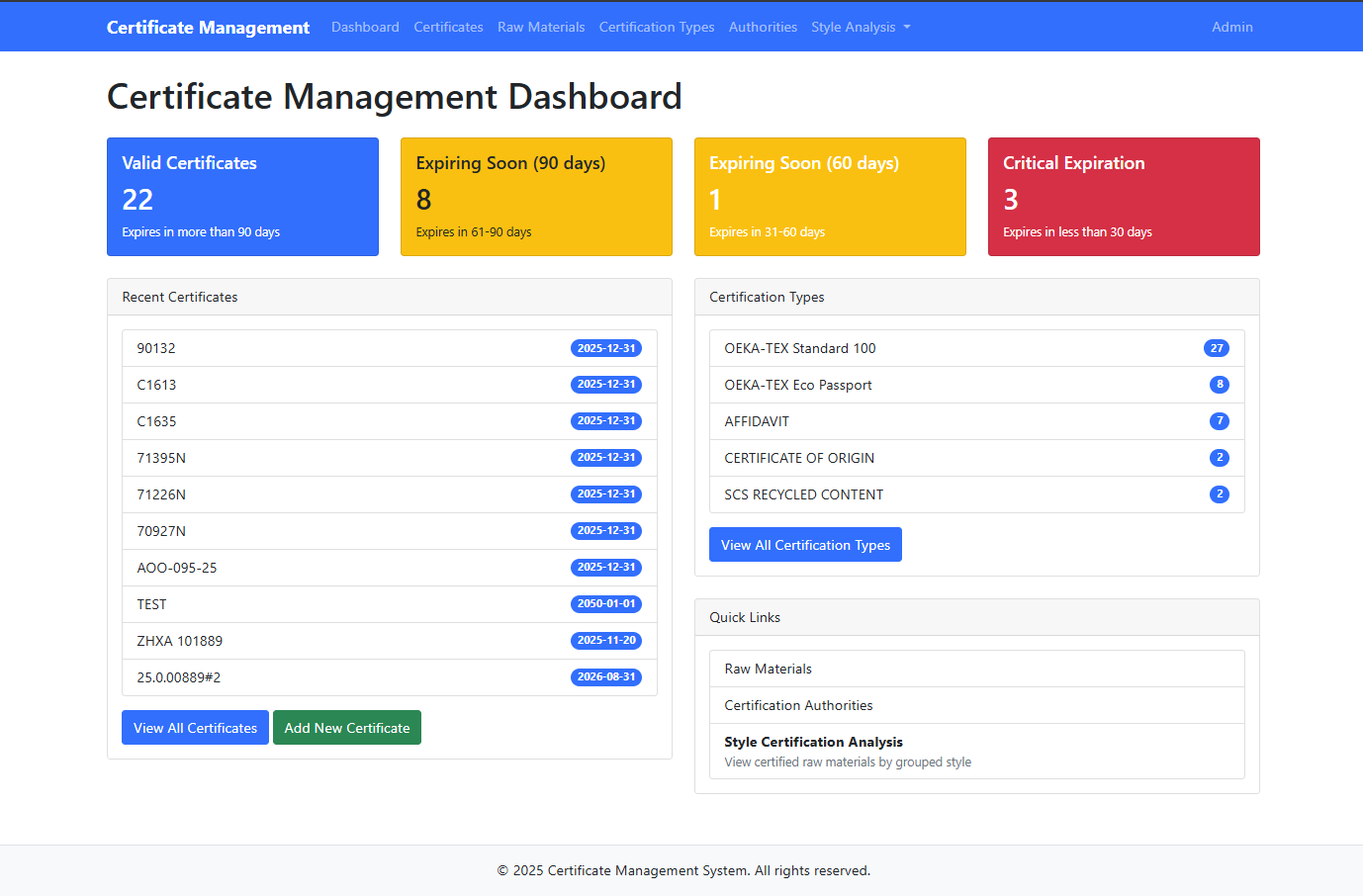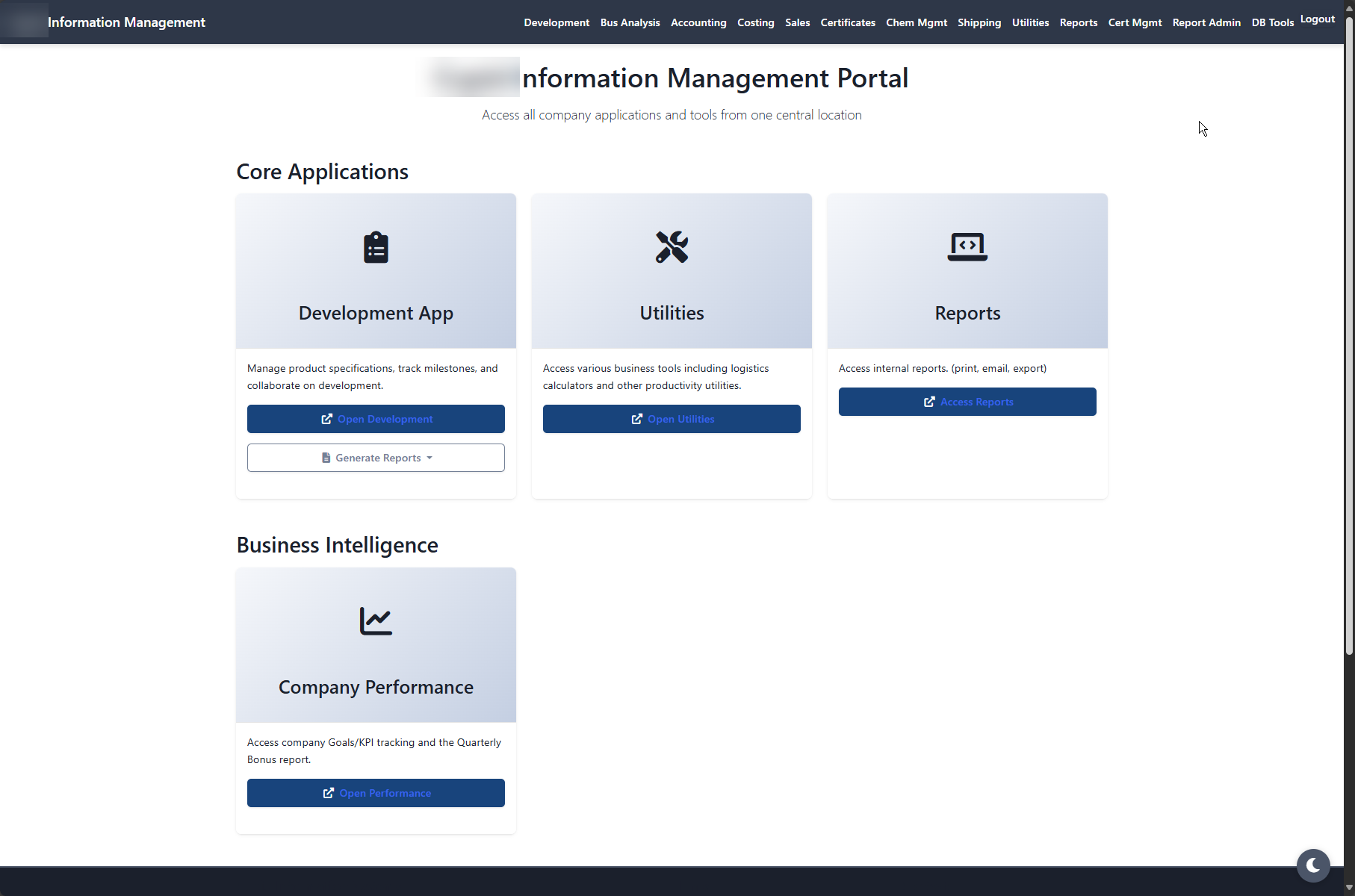To maintain OEKO-TEX® Standard 100 certification, every finished product must be linked to valid OEKO-TEX® certificates for its raw materials. With thousands of fabrics, elastics, and trims, this became a massive tracking challenge. Certificates were scattered across emails, spreadsheets, and file shares — making renewals, expirations, and audits time-consuming and stressful. I built an internal system to manage raw materials and their OEKO-TEX® certificates at scale, ensuring products could be certified quickly and reliably. The Challenge Scattered records: Certificates lived in multiple places with no single source of truth. Manual tracking: Expirations and renewals were tracked by hand, often missed until the last minute. Complex mapping: Finished products use multiple materials; linking each to valid certificates was error-prone. Audit pressure: Generating proof of compliance during audits was a scramble. The Solution I developed a centralized certification management system: A structured database of raw materials and their suppliers, each tied to OEKO-TEX® certificates and expiration dates. A linking engine that connects raw materials to finished products, ensuring certification traceability. Automated alerts for upcoming certificate expirations and renewals. Searchable reporting that produces auditor-ready documentation in minutes. Results & Business Impact Traceability: Every product can be verified against valid OEKO-TEX® certificates. Efficiency: Compliance management time reduced from days to hours. Audit readiness: Certificates and product mappings available at the click of a button. Reduced risk: Proactive alerts prevent expired certificates from slipping through. Features Delivered Centralized certificate repository. Expiration and renewal tracking with reminders. Many-to-many mapping between raw materials and finished products. Auditor-ready compliance reports. Role-based security and controlled data entry.

Project Overview
To maintain OEKO-TEX® Standard 100 certification, every finished product must be linked to valid OEKO-TEX® certificates for its raw materials. With thousands of fabrics, elastics, and trims, this became a massive tracking challenge. Certificates were scattered across emails, spreadsheets, and file shares — making renewals, expirations, and audits time-consuming and stressful.
I built an internal system to manage raw materials and their OEKO-TEX® certificates at scale, ensuring products could be certified quickly and reliably.
The Challenge
Scattered records: Certificates lived in multiple places with no single source of truth.
Manual tracking: Expirations and renewals were tracked by hand, often missed until the last minute.
Complex mapping: Finished products use multiple materials; linking each to valid certificates was error-prone.
Audit pressure: Generating proof of compliance during audits was a scramble.
The Solution
I developed a centralized certification management system:
A structured database of raw materials and their suppliers, each tied to OEKO-TEX® certificates and expiration dates.
A linking engine that connects raw materials to finished products, ensuring certification traceability.
Automated alerts for upcoming certificate expirations and renewals.
Searchable reporting that produces auditor-ready documentation in minutes.
Results & Business Impact
Traceability: Every product can be verified against valid OEKO-TEX® certificates.
Efficiency: Compliance management time reduced from days to hours.
Audit readiness: Certificates and product mappings available at the click of a button.
Reduced risk: Proactive alerts prevent expired certificates from slipping through.
Features Delivered
Centralized certificate repository.
Expiration and renewal tracking with reminders.
Many-to-many mapping between raw materials and finished products.
Auditor-ready compliance reports.
Role-based security and controlled data entry.
Project Details
Other
Completed
Related Projects

The Problem: Teams were stuck in 5250 emulators and rigid RPG reports. Simple tasks took …